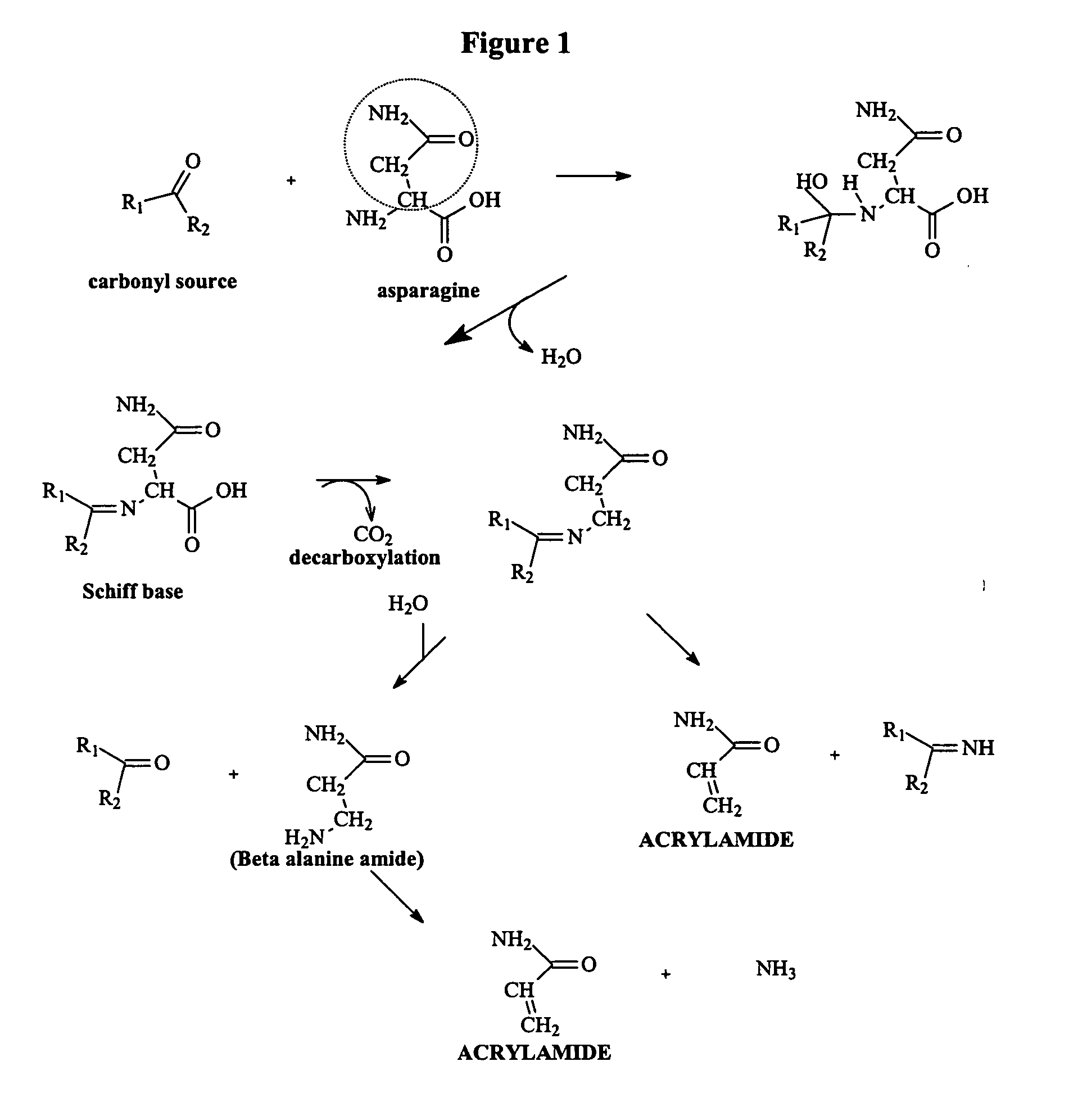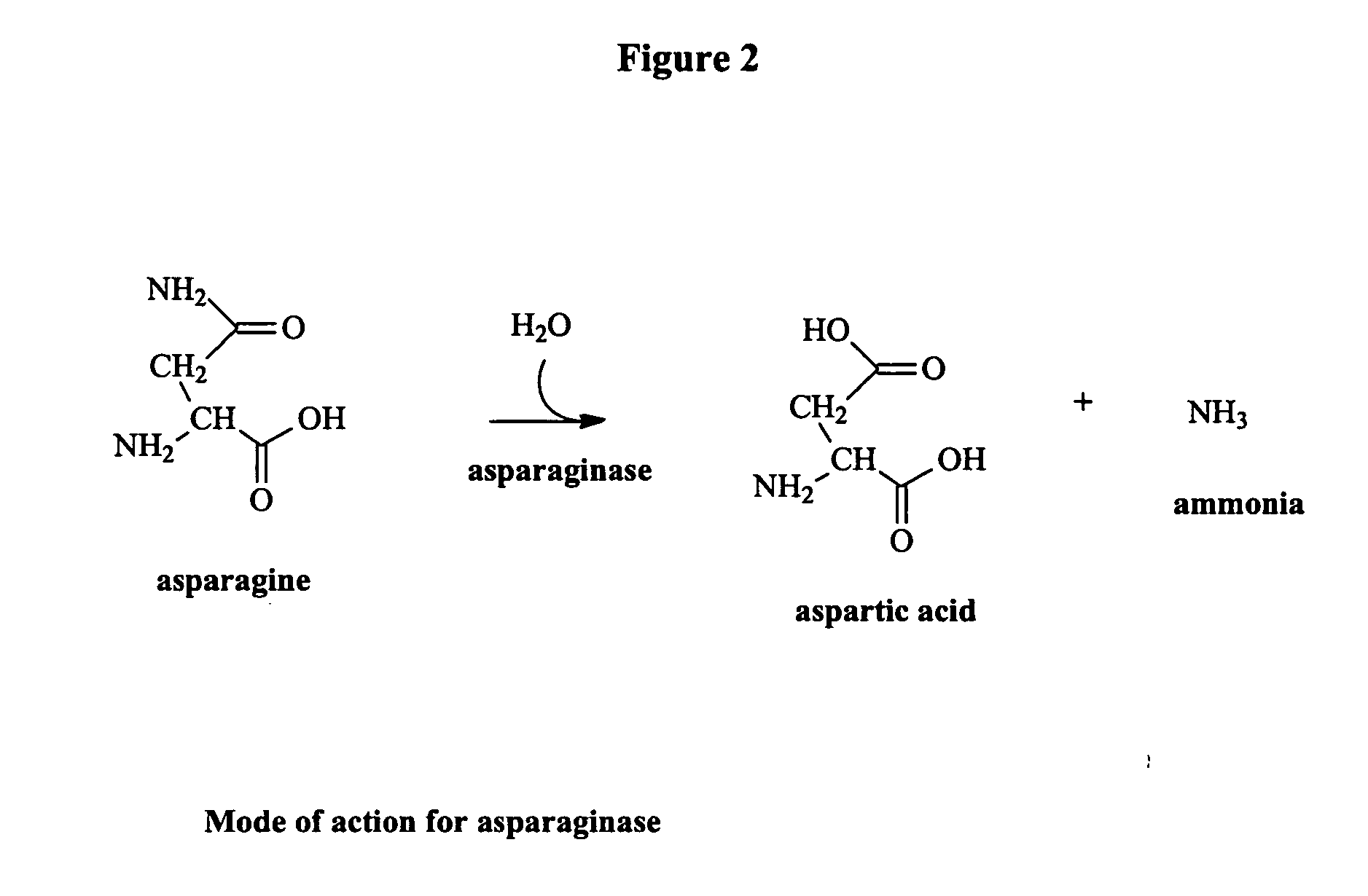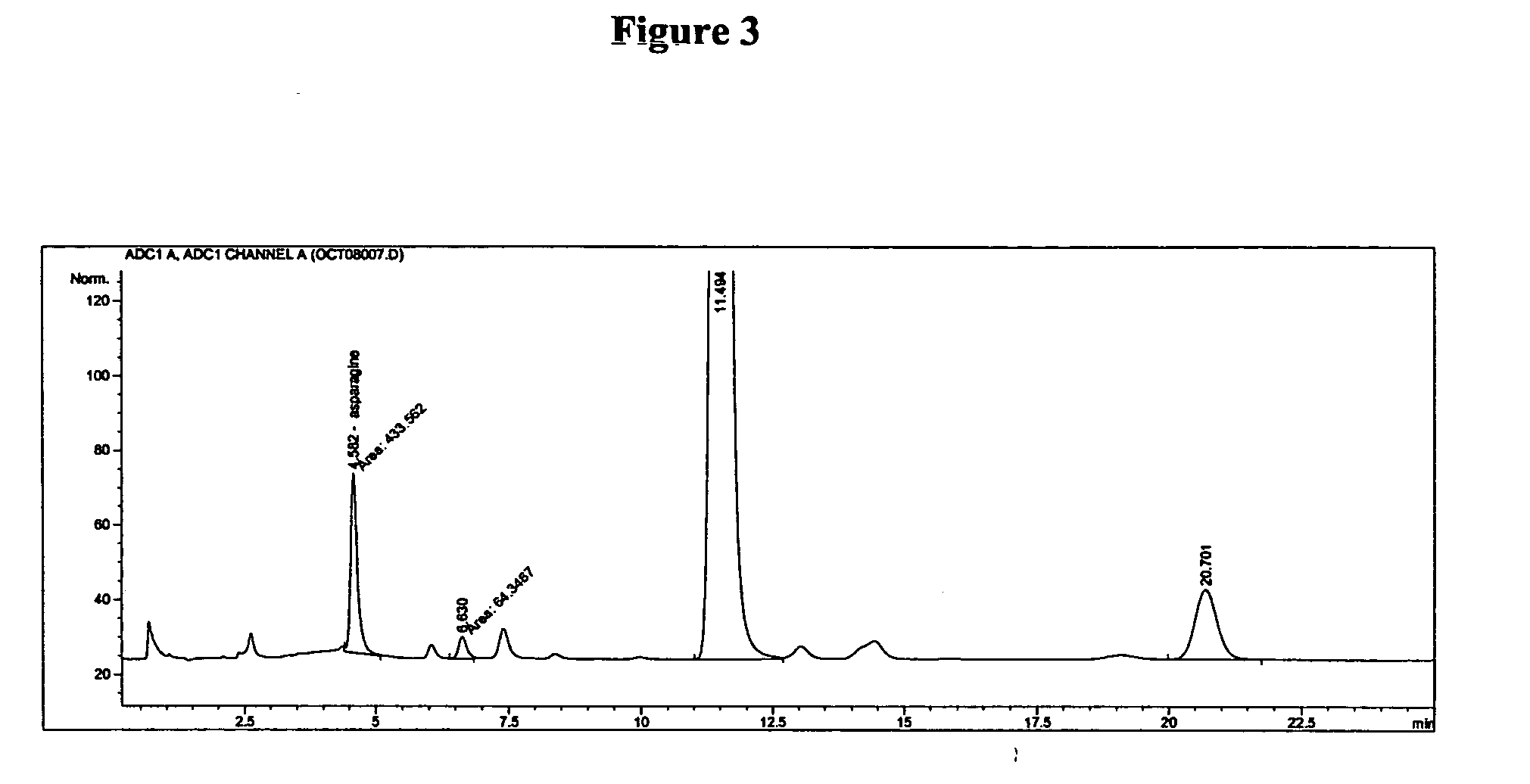Method for reducing acrylamide in foods, foods having reduced levels of acrylamide and article of commerce
a technology of acrylamide and food, applied in the field of acrylamide reduction in food products and food products, can solve the problems of limited human population data available, and achieve the effects of reducing the level of asparagine in food materials, and reducing the level of acrylamid
- Summary
- Abstract
- Description
- Claims
- Application Information
AI Technical Summary
Benefits of technology
Problems solved by technology
Method used
Image
Examples
example 1
Dehydrated Potato Product
[0285] Russet baking potatoes are rinsed with water then placed in a pot of boiling water. The potatoes are boiled (submerged) for 1 hour. The boiled potatoes are removed from the water, peeled, then the flesh is mashed. To 15 g of the mashed potatoes is added 45 g of water and the mixture is homogenized until uniform and such that no lumps are present.
[0286] 50 units of asparaginase (purchased from Sigma-Aldrich catalog #A2925) are added to this homogenized solution and the sample is shaken every five minutes for a total of 30 minutes incubation.
[0287] The amount of asparaginase added is based upon the following: Enzymes are sold in units of activity. One unit of activity is defined as follows: One unit will liberate 1.0 mole of ammonia from L-asparagine per minute at pH 8.6 at 37° C. Potatoes generally contain from about 0.2% to about 0.4% free asparagine. Thus, 15 g of potatoes contain from about 0.03 g to about 0.06 grams of asparagine, which equals f...
example 2
Potato Chips
[0289] Potato chips having reduced levels of acrylamide can be made using raw potato slices. Peel Atlantic potatoes and slice to ˜1.1 mm thickness. Rinse and pad dry. Blanch potato slices in 165° F. water for fifteen seconds. Cool and drain blanched slices. Soak 100 grams of blanched potato slices in 250 ml of distilled / deionized water containing asparaginase, having 100 units of activity, for one hour. Agitate sample by swirling for 1 minute every 8 minutes. Heat using a microwave oven (Panasonic microwave, model NN-S5488A) on a setting of high for 2 minutes followed by three 10 second washings with about 800 ml of cool tap water. Fry the treated potato slices in a fryer set at 375° F. for 60 seconds. (Example 2A) Two more batches of potato chips are made as above, with the exception that the blanch time is changed to 60 seconds (Example 2B) and 180 seconds (Example 2C).
[0290] Control samples are prepared in the same manner used to prepare Examples 2A, B, and C above,...
example 3
[0293] French fries having reduced levels of acrylamide can be made using raw potato strips. Peel Atlantic potatoes and cut into strips having a cross-sectional area of about 8 mm×8 mm. Rinse and pad dry. Blanch potato strips in 165° F. water for one minute. Cool and drain blanched strips. Soak 100 grams of blanched potato strips in 250 ml of distilled / deionized water containing asparaginase, having 100 units of activity, for one hour. Agitate sample by swirling for 1 minute every 8 minutes. Heat using a microwave oven (Panasonic microwave, model NN-S5488A) on a setting of high for 2 minutes followed by three 10 second washings with about 800 ml of cool tap water. Fry the treated potato strips in a fryer set at 375° F. for 60 seconds. (Example 3A) Two more batches of French fries are made as above, with the exception that the blanch time is changed to 3.5 minutes (Example 3B) and 7 minutes (Example 3C).
[0294] Control samples are prepared in the same manner used to prep...
PUM
 Login to View More
Login to View More Abstract
Description
Claims
Application Information
 Login to View More
Login to View More - R&D
- Intellectual Property
- Life Sciences
- Materials
- Tech Scout
- Unparalleled Data Quality
- Higher Quality Content
- 60% Fewer Hallucinations
Browse by: Latest US Patents, China's latest patents, Technical Efficacy Thesaurus, Application Domain, Technology Topic, Popular Technical Reports.
© 2025 PatSnap. All rights reserved.Legal|Privacy policy|Modern Slavery Act Transparency Statement|Sitemap|About US| Contact US: help@patsnap.com



